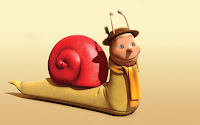Just as for Lawrence sex and beauty are one and the same thing, so too is being something he always conceives in terms of fire, or what he calls the god-flame, burning in all things. Indeed, Lawrence ultimately conflates terms so that his erotico-aesthetic and ontological speculations form a unified metaphysics.
Thus it is, for example, that Mellors characterises his illicit relationship with Connie in terms of a little forked flame that they fucked into being.
And thus it is that Lawrence asserts in a late article that whilst he doesn't quite know what sex is, he's certain that it must be some sort of fire: "For it always communicates a sense of warmth, of glow. And when the glow becomes a pure shine, then we feel the sense of beauty."
This communicating of warmth and beauty is what Lawrence understands by the term sex appeal, something which he believes to be a universal human quality and not just something belonging to the young and conventionally attractive. In a typically Lawrentian passage, he writes:
"We all have the fire of sex slumbering or burning inside us. If we live to be ninety, it is still there. Or, if it dies, we become one of those ghastly living corpses which are unfortunately becoming more numerous in the world.
Nothing is more ugly than a human being in whom the fire of sex had gone out. You get a nasty clayey creature whom everybody wants to avoid.
But while we are fully alive, the fire of sex smoulders or burns in us. In youth it flickers and shines; in age it glows softer and stiller, but there it is."
I quite like this (re)definition of a golem as a human being in whom the fire of sex has been extinguished and who communicates only a cold, ugly deadness (unfair and as meaningless as it may be).
And I like the idea of fire calling to fire and of sex appeal kindling a sense of joyful warmth and optimism. Lawrence is right, the loveliness of a really lovely woman in whom the sex fire burns pure and fine not only lights up her whole being, but transforms the entire universe. Such a woman - extremely rare even in a world of numerous good-looking girls and cosmetic enhancement - is an experience.
Lawrence concludes:
"If only our civilization had taught us how to let sex appeal flow properly and subtly, how to keep the fire of sex clear and alive, flickering or flowing or blazing in all its varying degrees of strength and communication, we might, all of us, have lived all our lives in love, which means we should be kindled and full of zest in all kinds of ways and for all kinds of things …
Whereas, what a lot of dead ash there is in life now."
II. Light My Fire
I don't know if Romanian philosopher E. M. Cioran read Lawrence when young - his obsessions led him towards German and French thinkers, rather than English novelists - but there are certainly quasi-Lawrentian resonances in his early work for those of us familiar with the writings of Lawrence.
Thus, like Lawrence, Cioran was interested in love in all its forms, particularly the concrete and monogamous love between man and woman which he took to be the quintessential form; not only in its sexual aspect, but as a "rich network of affective states". Love, born not of suffering, but of sincere generosity, is what Cioran most cherishes.
And, like Lawrence, Cioran ties his idea of love to beauty, being, and to fire. Man's sensitivity to beauty, he writes, intensifies as he approaches the joy that love brings. And in beauty "all things find their justification, their raison d'être".
Further, beauty allows us to conceive of things as things and to accept existence as is: "To place the world under the sign of beauty is to assert that it is as it should be [...] even the negative aspects of existence do nothing but increase its glory and its charm." This, of course, is a profoundly Nietzschean as well as a Lawrentian idea.
Beauty, concludes Cioran, may not bring salvation, "but it will bring us closer to happiness" and to the point where we can make a total affirmation of life. And what is more beautiful than the nakedness of flames, dancing in darkness:
"Their diaphanous flare symbolizes at once grace and tragedy, innocence and despair, sadness and voluptuousness. [...] The beauty of flames creates the illusion of a pure, sublime death similar to the light of dawn."
It's not only moths, it appears, that are transfixed by candlelight and dream of a fiery climax to their lives ...
Notes
D. H. Lawrence, Lady Chatterley's Lover, ed. Michael Squires, (Cambridge University Press, 1983). See the famous letter from Mellors to Connie with which Lawrence closes the novel.
D. H. Lawrence, 'Sex Appeal', Late Essays and Articles, ed. James T. Boulton, (Cambridge University Press, 2004). Often known as 'Sex Versus Loveliness', this article can be read online by clicking here.
E. M. Cioran, On the Heights of Despair, trans. Ilinca Zarifopol-Johnston, (the University of Chicago Press, 1992). See: 'Enthusiasm as a Form of Love' (75), 'The Beauty of Flames' (88), and 'Beauty's Magic Tricks' (119). All lines quoted above from Cioran are taken from these three sections.
Readers interested in earlier posts that compare and contrast Lawrence's work with that of Cioran on questions to do with becoming-animal and becoming-ash, can click here and here.
Musical bonus #1: click here. Musical bonus #2: click here. I must admit that I don't much care for either of these (hugely overrated) songs, but readers of a more hippie-persuasion will doubtless enjoy listening to them once more.






















